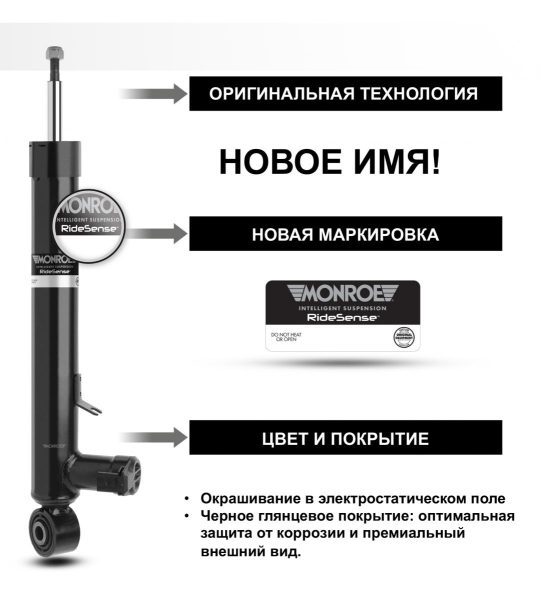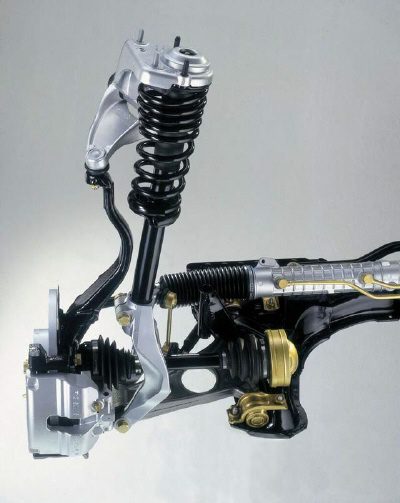
Electronically controlled shock absorbers
They change their damping effect and trim based on pulses from the electronic control unit, which analyzes the signals collected by special sensors regarding the degree of steering, braking, acceleration and body shake. This is dynamic buoyancy control.

The proliferation of electronically controlled dampers is a consequence of the fact that the choice of conventional springs and dampers is a trade-off between comfort and road stability needs. Usually stiff shock absorbers are combined with fairly soft springs. This limits body vibrations on corrugated surfaces (low-frequency voltages) and the wheels remain gripped, even on roads with high-frequency irregularities (porphyry or paving stones). However, electronically controlled shock absorbers that have variable characteristics are needed to ensure the best wheel-to-ground contact and reduce body vibrations without unduly compromising comfort.
The simplest of them have two adjustments, soft or hard, others have 3 or 4 levels of damping, the third can be smoothly adjusted from minimum to maximum values and even with different values of damping wheel by wheel. The adjustment is carried out by changing the area of the oil passage in the shock absorber using solenoid valves controlled by the control unit. Also being studied are shock absorbers with "electro-rheological" fluids that can change their density depending on the electrical voltage to which they are subjected (Bayer). Thus, the active suspension is electrically controlled; see also ADS with "magnetically reactive" oils.

